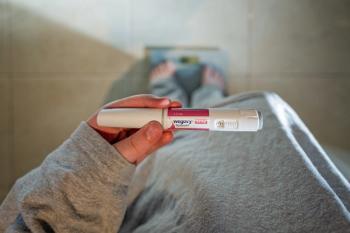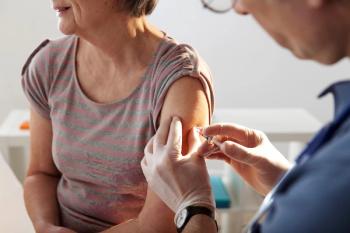
- Immunization Guide for Pharmacists November 2020
- Volume 2
- Issue 2
Pharmacy as a Destination for Receiving Vaccines During the COVID-19 Pandemic
Pharmacists can now play a larger role in increasing vaccination rates, while pharmacies can continue to be safe and convenient settings in which patients can receive vaccines.
The novel severe acute respiratory syndrome coronavirus 2 (SARS-CoV-2) has sparked much fear and anxiety during the coronavirus disease 2019 (COVID-19) pandemic. As a result, many individuals have decided to cancel scheduled physician visits, including visits to get vaccinated, over concerns of SARS-CoV-2 infection.1,2 In addition, many physician offices had reduced hours or temporary closings due to stay-at-home orders, limiting access.2,3 This decline in vaccinations has put many patients, especially pediatric patients, and communities at risk from otherwise vaccine-preventable diseases.2 However, as stay-at-home orders lift and communities start returning to a new sense of normal, pharmacists and pharmacies are well positioned to help individuals catch up on missed and overdue vaccines.4,5 The need for pharmacist immunization services is even more apparent. At the directive of the US Department of Health & Human Services (HHS), pharmacists can now play a larger role in increasing vaccination rates.6,7 Therefore, this article includes highlights of how pharmacies can continue to be safe and convenient settings in which patients can receive vaccines, and it explores the pharmacy’s role in COVID-19 vaccine administration, when such a vaccine becomes available.
IMMUNIZATION AUTHORIZATION FOR PHARMACISTS EXTENDED ACROSS THE UNITED STATES
Prior to the pandemic, the physician’s office was the most common place to receive an influenza vaccine. Data from the early 2017 flu season indicate that 64.6% of children and 34.7% of adults were vaccinated in their physicians’ offices.8 However, since the pandemic began, a notable decrease in the administration of noninfluenza pediatric vaccines (for individuals aged between 24 months and 18 years) occurred, likely as a result of parental concerns regarding visits to the pediatrician’s office and possibly exposing their children to SARS-CoV-2.1,2 In response, HHS issued an amendment to the Public Readiness and Emergency Preparedness (PREP) Act in August 2020, which allows pharmacists to order those vaccines routinely recommended by the Advisory Committee on Immunization Practices and administer them to individuals aged 3 to 18 years.7 Although many states had already permitted pharmacists to order and administer vaccines to this age group, the amendment expands this authorization to pharmacists across all states to allow for more comprehensive and convenient care.7,9 (For more information, see
PHARMACIES AS ACCESSIBLE, COST-EFFECTIVE, AND SAFE PLACES TO RECEIVE VACCINES
Community pharmacy—based immunization campaigns will be especially important during the 2020-2021 influenza season due to the risk of coinfection with SARS-CoV-2.5,10 Patients must be made aware that their local community pharmacy is an accessible, cost-effective, and safe place to receive vaccines.11 During the 2009 H1N1 influenza pandemic, the pharmacy was found to be the second-most preferred site for vaccination, after the physician’s office; this was associated with the patient’s comfort with their pharmacist as an immunizer and source of knowledge.12 Pharmacists can systematically assess vaccination histories, identify immunization gaps, and provide dedicated time to discuss the vaccine before its administration.11,13 An appeal to many patients is that often, no appointment is required, and the convenience of walking into the pharmacy at any time to be immunized is appreciated.11 However, pharmacies may also decide to implement an appointment-based system to help with social distancing and patient wait times.5 Appointmentbased immunization programs have permitted pharmacists to methodically assess patient vaccination histories and facilitate better vaccine discussions.11,14 Regardless of whether the pharmacy adopts a walk-in model or an appointment-based one, all pharmacy team members must be active in promoting vaccinations in the pharmacy. Emails, text messages, and automated calls to remind patients during influenza season or about other vaccines can also be used to market immunization services.15,16
As more health care offices open up to wellness visits, patients may still be hesitant to receive vaccines; however, pharmacists can help address and resolve vaccine hesitancy. Historically, hesitancy to become vaccinated has been a recurring threat that negatively affects immunization campaigns.15,17 In 2019, the World Health Organization identified vaccine hesitancy as being among the top 10 threats to global health.18 To address vaccine hesitancy, pharmacists can develop a communication plan to educate patients and aid in informed decision-making.15 The communication plan should include preparing responses to antivaccine behaviors or comments, such as the expression of concerns about adverse events; tailoring messages to the target population; identifying underlying causes of the target population’s hesitancy, then brainstorming resolutions; and campaigning through a multitude of communication methods geared toward the target population.15
In anticipation of increased vaccination rates, pharmacies must also minimize the risk of exposing both staff and patients to SARS-CoV-2 and implement standards to do so. Personnel should adhere to personal protective equipment recommendations and cleaning protocols to ensure the safety of all involved as outlined by the CDC. Engineering controls should be used to limit close contact with others. These controls include5,19:
- using signage/barriers and floor markers to guide waiting patients to remain 6 ft apart;
- installing clear barriers made of material such as plexiglass to shield against respiratory droplets;
- regularly disinfecting patient service and contact areas, as well as phones, workstations, keyboards, and doorknobs; and
- removing shared items such as magazines from the waiting area.
In addition to typical vaccine screenings, pharmacies should screen for signs and symptoms of SARS-CoV-2 infection. Pharmacies may also consider utilizing outdoor spaces including a drive-through model to vaccinate.5
PHARMACISTS’ ROLE IN OPERATION WARP SPEED COVID-19 VACCINE ADMINISTRATION PLAN
To accelerate the development and manufacture of the COVID- 19 vaccine, the HHS, in partnership with other federal agencies and private firms, created Operation Warp Speed.20 The goal of the operation is to produce and deliver 300 million doses of a COVID-19 vaccine beginning in January 2021.20 According to the results of a recent study by Reiter and colleagues, 69% of Americans were willing to get vaccinated with the COVID-19 vaccine when it becomes available.21 The HHS determined that increased accessibility of the vaccine was vital to the COVID- 19 response effort, and as a result, issued guidance under the PREP Act allowing pharmacists to order and administer the vaccine when it becomes available.6 Accessibility to pharmacists will be vital in administering the COVID-19 vaccine in order to achieve high vaccination rates.4,5,17 It will also be important to educate patients on the efficacy and safety of the vaccine in order for the maximum number of individuals to become vaccinated, as individuals are more likely to get vaccinated if they believe their health care provider recommends the vaccine.21
CONCLUSIONS
Safety measures taken in response to the COVID-19 pandemic have contributed to a decrease in vaccination rates, particularly in the pediatric population. During these unusual times, the community pharmacy continues to be an ideal environment to administer vaccines. With the support of policy makers, pharmacists have been granted the ability to vaccinate individuals aged as young as 3 years, in addition to being able to provide the COVID-19 vaccine when it becomes available. Now that flu season is around the corner, there is an opportunity for pharmacists to educate their patients on the importance of receiving the influenza vaccine, as well as any other vaccines or vaccine series for which the patient may be overdue. Community pharmacists are widely accessible to the public, knowledgeable, and very capable vaccination providers, and therefore they will play a key role during this upcoming influenza season and when the COVID-19 vaccine becomes available.
GEORGE ZIKRY, PHARMD, is the Community Pharmacy Enhanced Services Networks Executive Pharmacy Resident at Chapman University School of Pharmacy in Irvine, California.KARL HESS, PHARMD, APH, CTH, FCPHA, FAPHA, AFTM RCPS (GLASG), is an associate professor of pharmacy practice, director of community pharmacy practice innovations, and Community Pharmacy Enhanced Services Networks Executive Pharmacy Residency program director at Chapman University School of Pharmacy in Irvine, California.
REFERENCES
- Parkinson J. Kids could fall behind in vaccines due to COVID-19 fears. Contagion®. August 12, 2020. Accessed October 8, 2020. https://www.contagionlive. com/view/kids-could-fall-behind-in-vaccines-due-to-covid19-fears
- Santoli JM, Lindley MC, DeSilva MB, et al. Effects of the COVID-19 pandemic on routine pediatric vaccine ordering and administration—United States, 2020. MMWR Morb Mortal Wkly Rep. 2020;69(19):591-593. doi:10.15585/ mmwr.mm6919e2
- Vogt TM, Zhang F, Banks M, et al. Provision of pediatric immunization services during the COVID-19 pandemic: an assessment of capacity among pediatric immunization providers participating in the Vaccines for Children program— United States, May 2020. MMWR Morb Mortal Wkly Rep. 2020;69(27):859-863. doi:10.15585/mmwr.mm6927a2
- Elbeddini A, Prabaharan T, Almasalkhi S, Tran C. Pharmacists and COVID-19. J Pharm Policy Pract. 2020;13:36. doi:10.1186/s40545-020-00241-3
- Interim guidance for routine and influenza immunization services during the COVID-19 pandemic. CDC. Updated October 20, 2020. Accessed October 23, 2020. https://www.cdc.gov/vaccines/pandemic-guidance/index.html
- US Department of Health & Human Services. Guidance for licensed pharmacists and pharmacy interns regarding COVID-19 vaccines and immunity under the PREP Act. September 3, 2020. Accessed October 9, 2020. https:// www.hhs.gov/sites/default/files/licensed-pharmacists-and-pharmacy-internsregarding- covid-19-vaccines-immunity.pdf
- US Department of Health & Human Services. Third amendment to declaration under the Public Readiness and Emergency Preparedness Act for medical countermeasures against COVID-19. Federal Register. 2020;85(164):52136-52141. https://www.govinfo.gov/content/pkg/FR-2020-08-24/pdf/2020-18542.pdf
- National early-season flu vaccination coverage, United States, November 2017. CDC. Accessed October 8, 2020. https://www.cdc.gov/flu/fluvaxview/nifsestimates- nov2017.htm
- Weaver K. Pharmacist-administered immunizations: what does your state allow? American Pharmacy Association. October 1, 2015. Accessed October 1, 2020. https://www.pharmacist.com/article/pharmacist-administeredimmunizations- what-does-your-state-allow
- Kondo Y, Miyazaki S, Yamashita R, Ikeda T. Coinfection with SARSCoV- 2 and influenza A virus. BMJ Case Rep. 2020;13(7):e236812. doi:10.1136/ bcr-2020-236812
- Bach AT, Goad JA. The role of community pharmacy—based vaccination in the USA: current practice and future directions. Integr Pharm Res Pract. 2015;4:67-77. doi:10.2147/IPRP.S63822
- Miller S, Patel N, Vadala T, Abrons J, Cerulli J. Defining the pharmacist role in the pandemic outbreak of novel H1N1 influenza. J Am Pharm Assoc (2003). 2012;52(6):763-767. doi:10.1331/JAPhA.2012.11003
- Petrelli F, Tiffi F, Scuri S, Nguyen CTT, Grappasonni I. The pharmacist’s role in health information, vaccination and health promotion. Ann Ig. 2019;31(4):309- 315. doi:10.7416/ai.2019.2264
- Luder HR, Kunze N, Heaton PC, Frede SM. An appointment-based model to systematically assess and administer vaccinations. J Am Pharm Assoc (2003). 2018;58(3):290-295. doi:10.1016/j.japh.2018.02.010
- Rawson SJ, Conway JH, Hayney MS. Addressing vaccine hesitancy in the pharmacy. J Am Pharm Assoc (2003). 2016;56(2):209-210. doi:10.1016/j.japh.2016.02.008
- Jacobson Vann JC, Jacobson RM, Coyne-Beasley T, Asafu-Adjei JK, Szilagyi PG. Patient reminder and recall interventions to improve immunization rates. Cochrane Database Syst Rev. 2018;1(1):CD003941. doi:10.1002/14651858. CD003941.pub3
- Bragazzi NL. Pharmacists as immunizers: the role of pharmacies in promoting immunization campaigns and counteracting vaccine hesitancy. Pharmacy (Basel). 2019;7(4):166. doi:10.3390/pharmacy7040166
- Ten threats to global health in 2019. World Health Organization. 2019. Accessed October 9, 2020. https://www.who.int/news-room/spotlight/ten-threatsto- global-health-in-2019
- Guidance for pharmacies. CDC. Updated June 28, 2020. Accessed October 1, 2020. https://www.cdc.gov/coronavirus/2019-ncov/hcp/pharmacies.html
- Assistant Secretary for Public Affairs (ASPA). Fact sheet: explaining Operation Warp Speed. US Department of Health & Human Services. Updated October 14, 2020. Accessed October x23 2020. https://www.hhs.gov/coronavirus/ explaining-operation-warp-speed/index.html
- Reiter PL, Pennell ML, Katz ML. Acceptability of a COVID-19 vaccine among adults in the United States: how many people would get vaccinated? Vaccine. 2020;38(42):6500-6507. doi:10.1016/j.vaccine.2020.08.043
Articles in this issue
almost 5 years ago
New HHS Regulations Expand Pharmacists’ Role in Childhood ImmunizationsNewsletter
Stay informed on drug updates, treatment guidelines, and pharmacy practice trends—subscribe to Pharmacy Times for weekly clinical insights.

















































































































































































































